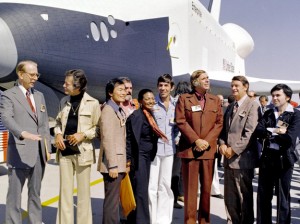Galileo Completes Jupiter Mission
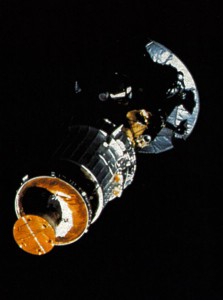
After fourteen years in space, eight of those as the first man-made object orbiting Jupiter, the unmanned NASA spacecraft Galileo is sent into the atmosphere of the giant planet. NASA decided to end Galileo’s mission in this manner in order to avoid any possibility of it colliding with one of Jupiter’s moons and potentially contaminating it with bacteria from Earth. How sanitary of them.
First FORTRAN Program Runs

The first FORTRAN program is executed. FORTRAN was developed by IBM scientists who were looking for a better way to program the IBM 704 mainframe computer. It quickly became the dominant programming language for scientific and engineering applications and still is used today, especially in the area of high-performance computing.
Turn That Frown … Sideways
September 19, 1982
In a posting made to a Carnegie Mellon bulletin board, Professor Scott Fahlman proposes the first known use of emoticons (also known as smilicons or smileys). While the use of emoticons became widespread during the 80’s and 90’s, their origin remained unknown until September 10, 2002, when the original message was retrieved from backup tape.
The following is the original message:
19-Sep-82 11:44 Scott E Fahlman :-) From: Scott E Fahlman <Fahlman at Cmu-20c> I propose that the following character sequence for joke markers: :-) Read it sideways. Actually, it is probably more economical to mark things that are NOT jokes, given current trends. For this, use :-(
Side note, personally I may have been the first to use a smilicon in printed form when I put one in my high school yearbook with my senior quote under my picture. Edwardsville High School Class of 1992!
NeXTSTEP OS Released
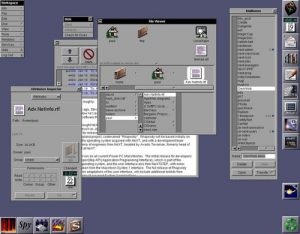
NeXT Computer releases version 1.0 of NeXTSTEP, an object-oriented, multitasking operating system. Originally designed to run on NeXT’s brand of computers, it was later ported to other architectures such as the Intel x86.
Often considered years ahead of its time, NeXTSTEP brought to market many advanced features that were not seen together in any other operating system for nearly 10 years. Its powerful object-oriented development environment was also used for the creation of the word wide web.
In 1997 Apple acquired NeXT Computer to build their next-generation operating system upon the NeXTSTEP architecture, later named Mac OS X. Today’s iOS that runs on iPhone and iPads is descended from Mac OS X and NeXTSTEP.
I had the opportunity to use NeXTSTEP in 1992 for a computer science class at the University of Illinois. I immediately recognized how powerful it was, yet didn’t fully appreciate what I was experiencing until years later. It really wasn’t until the late 1990’s and early 2000’s that other operating systems brought together the power and reliability of NeXTSTEP.
NASA Unveils Enterprise
NASA rolls out the first Space Shuttle, Enterprise, from its assembly facility to a waiting crowd. Included in the crowd was a delegation of actors from the Star Trek TV series. Originally to be named Constitution, a write-in campaign by Star Trek fans convinced President Gerald Ford and NASA to rename the Space Shuttle.
The Enterprise was a prototype shuttle, designed for the early testing phase of the Space Shuttle program. It was built without engines or a functional heat shield. While it performed various atmospheric test flights, and was originally intended to be retrofitted for spaceflight, it was determined that it would be less expensive to simply build new shuttles. Therefore the Enterprise never did actually fly into space.
Steve Jobs Named Interim CEO of Apple
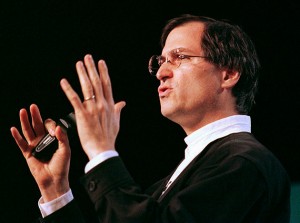
Twelve years to the day after resigning from Apple, Steve Jobs is named Interim CEO of Apple. Only seven months earlier, Jobs’ company NeXT was purchased by Apple and just two months earlier Gil Amelio resigned as Apple CEO. Much of the technology acquired with the purchase of NeXT was used to build the Mac OS X operating system, which became the core of the iOS operating system that runs the iPhone and iPad.
Steve Jobs Resigns from Apple
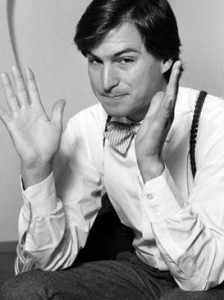
Five months after losing control of the company in a boardroom battle with John Sculley, Steve Jobs resigns from Apple. Jobs goes on to found NeXT and purchase Pixar before eventually returning to Apple.
The Last Apple II
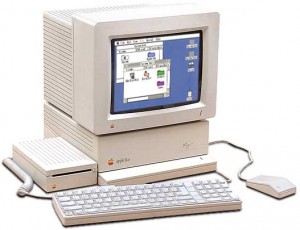
Apple introduces the Apple IIgs, the last major product release in the Apple II series of personal computers. Blending the older Apple II series computers with aspects from the Macintosh computer, the advanced “graphics and sound” capabilities of the IIgs (hence the name) was ahead of other contemporary computers such as the Macintosh and IBM PC. However, as Apple chose to focus on the Macintosh line of computers, Apple eventually ceased development of the Apple II series. The last IIgs was produced in December of 1992.
First Man-Made Object on Moon
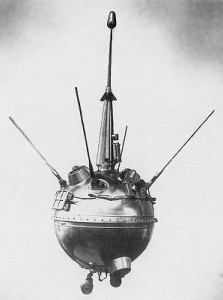
The Soviet space probe Luna 2 crashes onto the surface of the Moon, becoming the first man-made object to reach the Moon, as well as the first man-made object to reach any celestial body.
First Commercial Hard Drive

The IBM 350 Disk Storage Unit Model 1 was announced, which was the first commercial storage unit to use magnetic disk storage, the technology behind hard disk drives. About the size of two refrigerators and weighing in at one ton, the 350 could store about 4 – 5 megabytes, depending on how it was calculated.
The 350 would be an integral part of the IBM RAMAC 305 computer, which would be introduced 9 days later on September 13th. The RAMAC 305 and 350 Disk Storage Unit were designed to replace the punch card “tub file” system that was the primary means of storing repeatedly accessed data.

